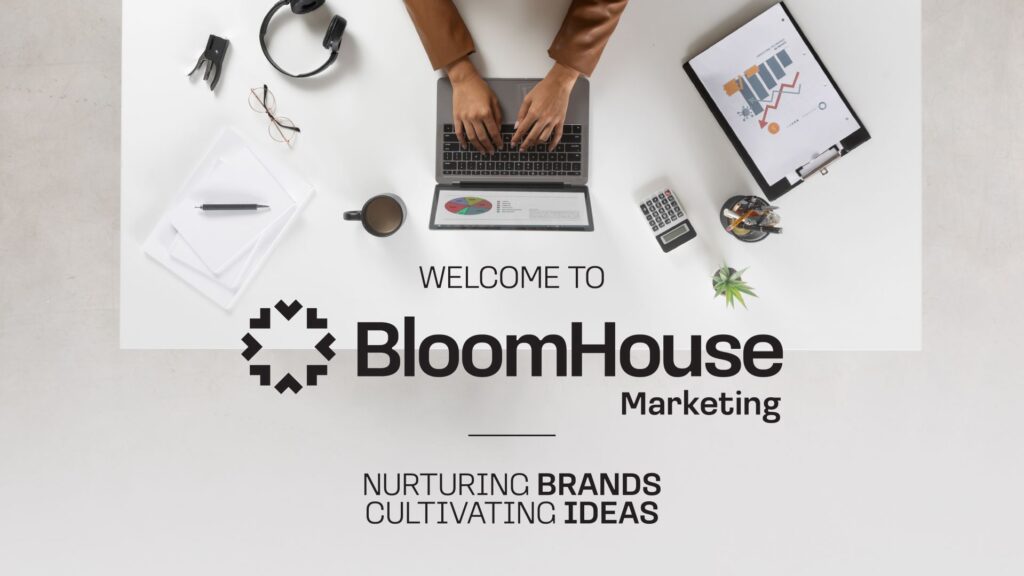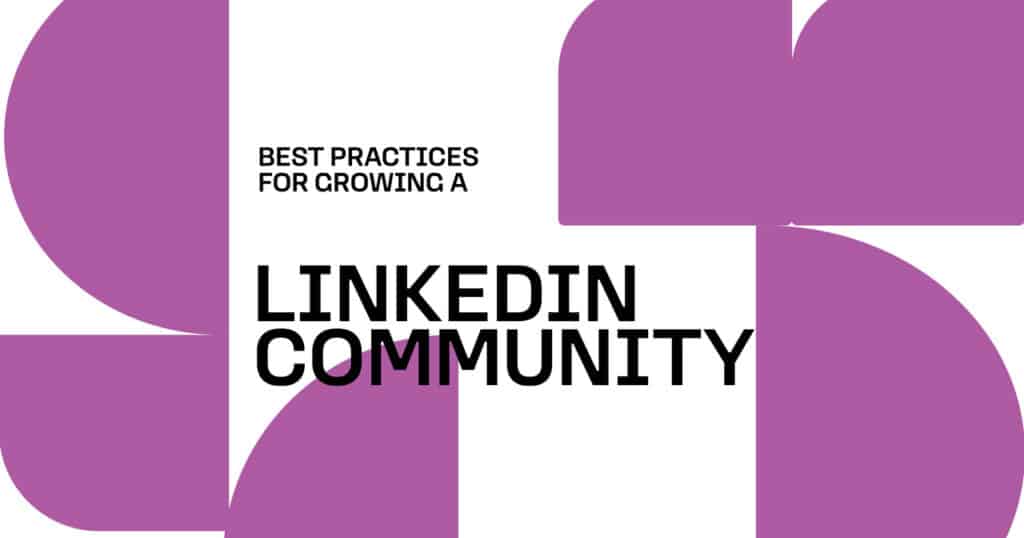LinkedIn is the ultimate site for connecting, sharing ideas, and building meaningful relationships for any professional. To any business or individual, LinkedIn community building represents an essential tool for building a thriving network that can engender collaboration, thought leadership, and growth. Here, you will learn actionable strategies to master the art of Building a LinkedIn community as well as help you amplify your LinkedIn networking strategies more effectively.
What Are LinkedIn Groups?
LinkedIn Groups are niche communities that offer platforms for professionals to share thoughts about specific industries, gain information, and connect with like-minded people. This social media is different from all other media in that it allows professionals to engage in niche-specific topics and create meaningful networks.
These groups are ideal for:
- Industry thought leaders sharing their insights.
- Companies seeking to establish thought leadership.
- Professionals wanting to expand their network.
Upon enabling participation or management of the LinkedIn Group, you open possibilities for better tips on participating in the LinkedIn community along with meaningful interactions.
Why Are LinkedIn Groups Relevant?
Enhancing Professional Networking
These are the platforms where there can be a good conversation through engagement with other like-minded people interested in the same thing.
Boosting Business Growth
For businesses, a well-thought-out group can result in more exposure, leads, and industry acknowledgment. They use it to show off themselves as experts and increase the confidence potential customers have about them.
Fostering a Niche Community
LinkedIn Groups are niche and targeting is easier when people are working with a definite group or industry. Niche targets align perfectly with LinkedIn’s networking strategies while connecting to the right influencers and expanding your influence reach.
How to Create a Successful LinkedIn Group
Building and managing a LinkedIn Group can significantly boost your LinkedIn community-building efforts. Here’s a step-by-step guide to creating and maintaining a successful group:
Creating and maintaining a LinkedIn Group is also an excellent way to strengthen your LinkedIn community building. Here’s the step-by-step process for creating and maintaining a winning group:
- Pick a Topic That Your Customers Care About
The basis of a successful LinkedIn Group lies in selecting a topic aligned with your target audience’s interests. Here’s how to ensure your topic hits home:
- Identify Trends in the Industry. Look at what’s trending in your industry. Common areas include new technologies, new challenges, or new solutions.
- Common Gain Points. Identify the pain points of your target audience and build a space for solutions and discussion.
- Your Expertise. Find a topic where you shine. This will place you as a thought leader but also give value to members of the group.
For example, if you are a digital marketing agency, a group entitled “Mastering Social Media Marketing Trends” attracts people wanting to stay on top of their game and places you as the resource for this type of knowledge.
- Create Your LinkedIn Group
Creating your LinkedIn Group is easy but requires attention in setting it up to achieve success:
Step into the Groups Section. Log on to your LinkedIn account then get into the “Groups” section and click “Create Group.”
Developing Your Group Identity
| Give Your Group an Eye-catching Name | Ensure that it makes good sense to search and is easy for people to recognize. |
| Sustainable Business Leader Network | Select an image for your Banner. Include a banner with great taste that will convey the theme in it. Write a Clear Summary. Write a compelling, concise story about what your group is and why it has value to others. Use keywords to Increase your LinkedIn following and boost SEO. |
A well-designed group attracts members, but it also establishes a benchmark for your community.
- Set Group Rules
Clear rules help to build a positive, productive community in your group. Create these rules by including the following:
- Content Posting Guidelines. Decide what type of content to post, whether it be articles, discussions, or case studies.
- Anti-Spam Rules. Make sure they know that self-promotion, inappropriate links, and overt advertising are not permitted.
- Standards of Civil Discussion. Encourage participants to treat each other respectfully and not to engage in hate speech or discriminatory actions.
Hang these rules in an accessible area so new members will pick up quickly what’s required of them and diminish their opportunity for further interference.
- Publish Flawlessly, Analyze Effortlessly, Engage Authentically.
Keeping your community alive and relevant for members is solely through momentum. Here’s how that’s best done:
- Content Frequency. Industry news, opinions from experts, and shared resources would all get conversations started.
- Interactive Content. Conduct a poll, quiz, or survey that challenges your audience to participate and contribute their feedback.
- LinkedIn Analytics. Watch the engagement rate and your member growth to calibrate your content strategy.
- Authenticity Is Important. Authentic engagement breeds trust in your group as a meaningful source for professionals.
- Invite Your Connections and Grow Your Group
Building an active community starts with inviting the right people. Here’s how to do it:
- Start With Your Network. Invite connections who share an interest in your group’s topic.
- Cross-Promote. Leverage other social media platforms, blogs, and email newsletters to reach a broader audience.
- Use LinkedIn Search. Search for professionals by industry, job title, or location to find potential members who would benefit from your group.
Focus on quality over quantity. Engaged members contribute more value to your group than passive participants.
- Start Discussions and Be Active
Your role as a group creator doesn’t end with setup. Actively participating in and initiating discussions is essential:
- Ask Open-Ended Questions. For example, “What’s the biggest challenge you face with remote work?”
- Share Case Studies and Stories. Use real-life examples to highlight successes or lessons learned in your industry.
- Host Live Q&A Sessions. Engage members directly by answering their questions in real time while fostering a sense of community.
Engage members with their contributions by responding to them, acknowledging their insights, and sharing posts when relevant.
- Moderate All Posts and Remove Spam
As your group size increases, moderation will be necessary to keep quality and purpose in your group. Good moderation means
- Approving Relevant Post. All posts should be relevant to the topic of the group and the rules before they go live.
- Removing Spam. Spam is irrelevant or promotional content. Remove it beforehand to keep the discussions meaningful.
- Resolving Conflicts. Resolve disputes diplomatically and set an example of respectful communication.
With active moderation, the space makes sure participants have safety and engagement so they can express their thoughts and ideas.
Tips for Successful LinkedIn Community Engagement
Engage With Members Personally
Appreciation of member contributions is one way of deepening connections. Answer comments, endorse skills, and recognize milestones.
Leverage Content Marketing
Content is a significant resource in LinkedIn community building. Share relevant articles, videos, and infographics.
Utilize LinkedIn Features
Apply LinkedIn features to increase engagement:
- Poll to get their opinions.
- Organize virtual events to gather members together.
- Share group highlights in recognition of active contributors.
Proven Strategies for LinkedIn Networking
Understanding Your Audience
Effective networking begins with knowing your audience. Use LinkedIn’s analytics tools to understand demographics and engagement patterns.
Crafting a Winning Content Strategy
A successful group thrives on relevant, high-quality content. Plan posts around industry news, educational resources, and discussion prompts.
Maximizing Engagement Through Tagging and Scheduling
Tag members in relevant discussions to increase participation. Schedule posts to maintain a steady flow of content.
Analyzing Performance Metrics
Monitor the key metrics such as group growth, post reach, and engagement rates to adjust your strategy.
Addressing Common Misconceptions About LinkedIn Groups
Myth 1. Managing LinkedIn Groups takes a lot of work.
Reality. Schedule posts and delegate moderation to save time.
Myth 2. LinkedIn Groups are only for big companies.
Reality. Groups work just as well for small businesses and solo professionals.
Call to Action: Start Building Your LinkedIn Community Today!
Establish authority, build relationships, and achieve professional goals by growing a LinkedIn community. Start today by creating or joining a LinkedIn Group that aligns with your interests and expertise.
Ready to make meaningful connections? Take the first step and watch your community thrive!
FAQ’s
- How can I grow my LinkedIn Group quickly?
To grow your LinkedIn community building quickly, focus on inviting the right people to start with your existing network, then expand by using LinkedIn’s advanced search and promote your group on other platforms. Share valuable, engaging content consistently to attract new members. Actively participate in discussions and encourage current members to invite others.
- How do I keep my LinkedIn Group engaged?
LinkedIn community engagement tips include regularly posting industry-relevant content, starting discussions, hosting live Q&A sessions, and sharing case studies or success stories. Use polls, surveys, and other interactive formats to keep members engaged and encourage them to share their insights.
- What should I do if my LinkedIn Group has low engagement?
If your group is experiencing low engagement, it may be time to reassess your content strategy. Try posting more frequently, asking open-ended questions, or using a mix of media (such as videos and infographics). Additionally, encourage members to participate by recognizing their contributions and offering incentives for sharing insights.
- How do I handle spam in my LinkedIn Group?
To prevent spam, establish clear group rules, including a no-spam policy, and regularly moderate posts. Remove irrelevant content promptly and warn members who repeatedly violate the rules. Consistently enforcing your group’s guidelines will ensure a positive and productive environment for all members.
- Can LinkedIn Groups help with business growth?
Yes! Building a LinkedIn community allows businesses to build authority, foster meaningful connections, and gain visibility. By engaging in relevant discussions, sharing valuable insights, and positioning your brand as a thought leader, you can enhance your reputation and attract potential customers. Plus, with targeted networking strategies, LinkedIn Groups provide a direct way to connect with professionals in your industry.









